Liberg, B. & O. – History
Bernhard and Oscar Liberg were brothers born in the 1830s in Eskilstuna, Sweden. Oscar, the eldest brother, became involved in refining and fabricating iron, steel, and other metals in the late 1850s through his involvement with the Eskilstuna Fristad (“Sanctuary” or “Refuge”).
The Fristad was established in 1771 as both a physical location within Eskilstuna and a legal entity. It was created to attract skilled metal workers from other countries — particularly Germany — by providing them with significant tax breaks. It also allowed metal workers to bypass the trade guilds by removing the necessity that they join the guilds or have a master’s certificate in order to work there. These incentives worked well. They attracted skilled metal workers and helped improve metal working technology and techniques.
The Eskilstuna Fristad was fundamental to Eskilstuna’s development as a center of excellence for the manufacturing of steel and other metal products. Oscar’s experience with the Fristad would have been very instructive and useful. By 1861, he and Bernhard decided to join forces and purchase land and property at Rosenfors for the purpose of manufacturing steel products.
Rosenfors is located about 6 kilometers south of the center of Eskilstuna. It is part of Skogstorp community in the Husby-Rekarne District or Parish of the Eskilstuna Municipality, Södermanland County, Sweden. Note that this “Rosensfors” should not be confused with the “Rosenfors” located in Eastern Sweden. It’s easy to do since a steel manufacturing facility is also located there.
Rosenfors started as a small blacksmith shop in the early 1700s and by the mid-1800s, the shop was bought and combined with another company. The newly consolidated company was officially named Rosenfors.
The map below shows Rosenfors in relation to Eskilstuna and Skogstorp.
You can see the canal above (it’s green rather than blue) snaking from the top left of the map, through the center of Eskilstuna, and then down past Rosenfors and Skogstorp. (Rosenfors is located right beside this canal.) This canal played an important role in the development of the local steel manufacturing industries from a power, water, and transportation perspective.
When Bernhard and Oscar Liberg bought the Rosenfors property in 1861 (reportedly from Carl Ulrik Bergstedt), they immediately began expanding the production facilities and started manufacturing steel edge tools. They labelled their goods using the trade name “B. & O. Liberg”. They also eventually adopted the ‘Rose” as part of their trademark, stamping a stylized image of a rose on some of their products and printing it on some of their promotional information. For example, this Liberg plane blade has an attractive version of the Liberg rose stamped on the top front of the blade.
Note the clusters of roses on the four corners of the 1909 Liberg promotional brochure below.
Under the Libergs’ guidance, Rosenfors became an impressive manufacturing facility. Below is an artist’s rendering of how Rosenfors looked in 1878, around 17 years after the Libergs bought it and began developing it. Note the proximity of the buildings to the water. The Main Building is on the extreme lower left. The Main Factory is above it on the upper left. At the top center is the Side Building which also contained manufacturing facilities. Some of the smaller houses shown are residences provided by the Libergs, including one for the facility foreman.
The Libergs were progressive and community-minded industrialists and employers. They built housing for workers on the Rosenfors property and in 1876 they finalized an agreement with the Husby-Rekarne municipality stating that their company would be responsible to look after the poor health of its employees, not the municipality.
The Libergs also built a beautiful English-style park near the factory grounds called Rosenforsparken. The Park was built between the late 1860s ad the mid-1870s. It still exists and continues to be a Rosenfors/Skogstorp community and tourist attraction.
The photo below gives a glimpse of the Rosenfors factory floor. The large pile of skates on the lower right were one of many popular products made by the Libergs.
The photo below is poignant. It was taken in front of the Libergs’ Main Building and it shows the factory employees plus the widows of factory workers (bottom left). It’s a reminder of the dangers of factory work during those times, including hazardous machinery and industrial diseases such as silicosis, lead poisoning, and so on.
Production at Rosenfors continued to grow. In 1890 a fire destroyed parts of the factory, but the Libergs carried on, rebuilt, and continued to manufacture and sell an impressive line of products.
In 1896, “B. & O. Liberg” became a limited company. They changed their trade name to “B. & O. Libergs Fabriks Aktiebolag”, likely adding the “s” on “Libergs” to reflect ownership by the two brothers. The photo below was taken at a trade exposition in 1897 and it illustrates this name change as well as the broad assortment of items that the Libergs were manufacturing at that time. Products included plane blades, chisels, axes, flatware, swords (sabres and foils), wrenches, scissors, shears, corkscrews, flat irons and stands, hat burnishing irons, and skate blades.
The Rosenfors manufacturing facility and surrounding grounds became very picturesque over time and was the subject of many postcards and photographs. The photos below show the area from three different perspectives, moving from left to right. (To track this movement, just follow the movement of the circular window in the photos.)
March 11, 1902, was a grim day at Rosenfors. Johan Bernhard Liberg (B. Liberg) passed away on that day. Although his death created a large gap, the Liberg factory continued to prosper and produce good quality and popular products. The Rosenfors factory continued to use his name on their products right until the day that they ceased operations.
Below is a small newspaper clipping memorializing J.B. Liberg.
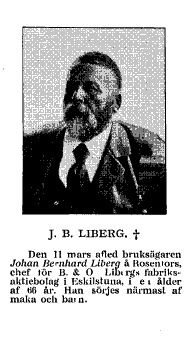 In 1908 Eskilstuna Stålpressnings AB, a large steel rolling mill located across the canal from the Liberg factory, introduced a power plant on the canal at Rosenfors. Below is a photo of the steel mill with its distinctive tall chimney.
In 1908 Eskilstuna Stålpressnings AB, a large steel rolling mill located across the canal from the Liberg factory, introduced a power plant on the canal at Rosenfors. Below is a photo of the steel mill with its distinctive tall chimney.
Eskilstuna Stålpressnings AB agreed to give the Libergs’ factory 150 horsepower of free electrical power from the power station (day and night, “to remain forever”) in return for the Libergs sharing their canal water rights with Eskilstuna Stålpressnings AB. The electricity was supplied to the Liberg factory and the Stålpressnings factory via land lines.
The lettering on the front of the power station reads “ESKILSTUNA STÅLPRESSINGS A. Bs” “KRAFTSTATION” “1908”.
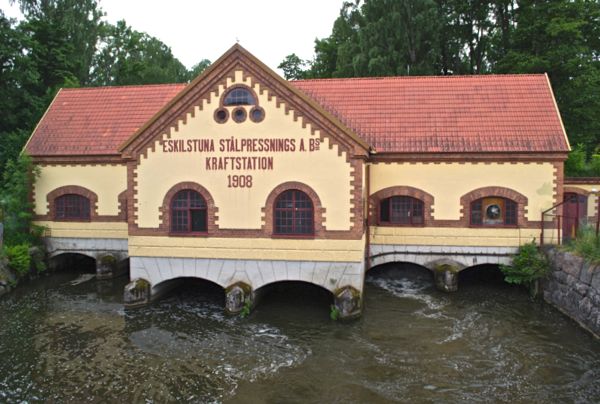 Photo courtesy of Fredrik Alpstedt
Photo courtesy of Fredrik Alpstedt
In 1921, Eskilstuna Jernmanufaktur AB (Jernbolaget) became the majority shareholder of B. & O. Libergs Fabriks Aktiebolag and the Rosenfors factory continued to operate as a subsidury of Jernbolaget. This change is reflected in the “Svensk Industrikalender 1947“ (Swedish Industrial Calendar 1947) below which lists B. & O. Libergs Fabriks AB, Skogstorp, as an operating entity and then refers the reader to Eskilstuna Jernmanufaktur AB, Eskilstuna.
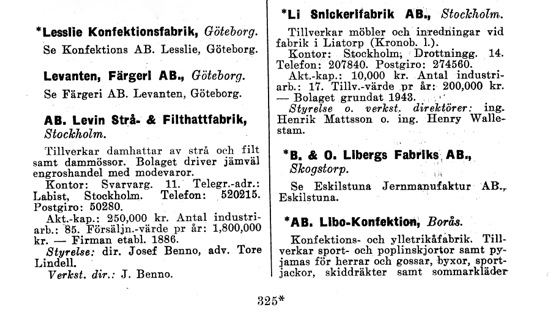 The photo below shows how the B. & O. Liberg compund looked from the air in 1955.
The photo below shows how the B. & O. Liberg compund looked from the air in 1955.
The B. & O. Liberg production facility remained on the Rosenfors premises until 1957 when the property was purchased by AB Sveaverken, a manufacturer of screw conveyors and ventilation systems that still exists today. It’s reported that Jernbolaget offered employment to all Liberg employees who were displaced by the sale and closure of the Rosenfors factory. These employees would, however, have had to change jobs sites from Rosenfors to Jernbolaget’s Tunafors factory in Eskilstuna.
AB Sveaverken, the new Rosenfors factory site owner, made products primarily for Alfa Laval (formerly Eskilstuna Stålpressnings AB). This was very convenient as Alpha Laval was located just across the canal.
Below is a photo of the old Liberg Main Building after the Rosenfors factory property was purchased by AB Sveaverken. Note the Sveaverken sign on the roof of the small building on the right.
Rosenfors-Skogstorp is a very pretty area. Below is a modern view of it. The lighter square on the map below highlights the Rosenfors area with the old B. & O. Liberg factory site being near the center.
Below is a magnified version of the highlighted square above showing some points of interest. Note that the “Old Steel Mill Site” was owned by Eskilstuna Stålpressnings AB and is now owned by Alpha Laval.
The following photos provide a ground view of the highlighted map areas. The photo distortion is caused by the camera lens used for these photos.)
This photo was taken beside the old Rosenfors factory site, near the canal bridge. The Power Plant can be seen on the left among the trees. The chimney in the center marks the former location of the old Eskilstuna Stålpressnings AB steel plant which has been known as “Alpha Laval” since the 1960s.
Looking in the opposite direction one can see the Power Plant on the far right beside the canal bridge. Some of the old Liberg Rosenfors factory buildings are just barely visible across the canal bridge on the far left.
This photo of the Power Station was taken head on from the canal bridge.
Here is a closer view of the old Liberg Rosenfors factory site taken from just before the the canal bridge in 2011.
Here is a photo of the old Rosenfors factory grounds taken from the highway in 2011.
Moving closer, we can see the old Liberg Main Building just left of the large tree in the foreground.
B. & O Liberg Timeline
1832 – Lorentz Fredik Oscar Liberg (O. Liberg) was born on August 15, 1832 in Eskilstuna.
1836 – Johan Bernhard Liberg (B. Liberg) was born on December 21, 1836 in Eskilstuna.
Late 1850s – Oscar Liberg was working successfully with other metal fabricators in the Eskilstuna Fristad (“Sanctuary” or “Refuge”) developing and refining iron, steel, and other metal fabrication techniques.
1861 or 1862 – Bernard and Oscar Liberg bought the Rosenfors Jernfabrik manufacturing facility south of the town of Eskilstuna and began manufacturing steel products under the trade name of “B. & O. Liberg” . (Note that 1861 and 1862 are both cited frequently, so I’m including both dates.)
Late 1860s to mid-1870s – The Libergs create a beautiful English-style park called “Rosenforsparken” that still exists and is in use today.
1876 – The Libergs make an agreement with the Skogstorp (Husby-Rekarne) municipality that the Libergs will look after the poor health of their employees, not the municipality.
1890 – Parts of the Libergs’ Rosenfors factory are destroyed by fire, but manufacturing operations resume quickly.
1896 – B. & O. Liberg is converted to a limited company, B. &. O. Libergs Fabriks Aktiebolag. By this time it is manufacturing and selling plane blades, chisels, axes, flatware, swords (sabres and foils), wrenches, scissors, shears, corkscrews, flat irons and stands, hat burnishing irons, and skate blades.
1896 – The Libergs change their trade name to “B. & O. Libergs Fabriks Aktiebolag”. This trademark, usually abbreviated, begins to appear on their products.
1902 – Johan Bernhard Liberg passes away in Rosenfors (Husby-Rekarne) on March 11, 1902.
1908 – The Eskilstuna Stålpressnings AB steel factory builds a power plant on the canal near Rosenfors. This power plant makes electric power available to the Libergs’ Rosenfors Factory. In the 1960s. this company became known as “Alfa Laval”.
1921 – Eskilstuna Jernmanufaktur AB (Jernbolaget) becomes the majority shareholder of B. & O. Libergs production facilities.
1957 – The Liberg production facilities remain on the Rosenfors premises until 1957 when the property is purchased by AB Sveaverken. All displaced Liberg factory workers are offered positions at Jernboalget’s production facilities at Tunafors in Eskilstuna.
Notes
Rosenforsparken, the community park created by the Bernhard and Oscar Liberg, is truly a beautiful place. It is still in use and enjoyed by the surrounding community and tourists alike. I have explored it extensively online (I got a little sidetracked in my research) and have enjoyed the photos and videos available. Rosenforsparken has a Facebook page with many photos for those who wish to explore it.
https://www.facebook.com/pages/Rosenforsparken/153502428052527
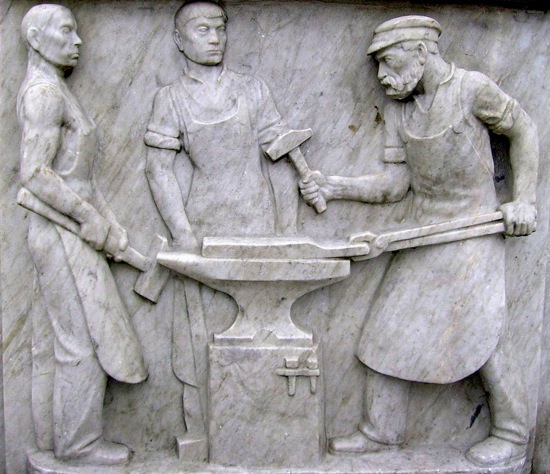
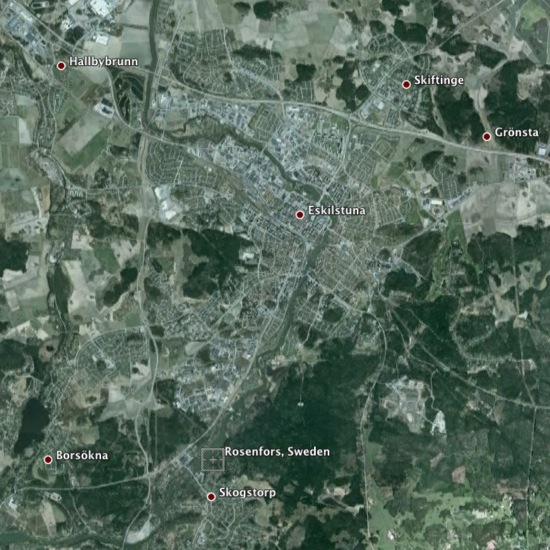
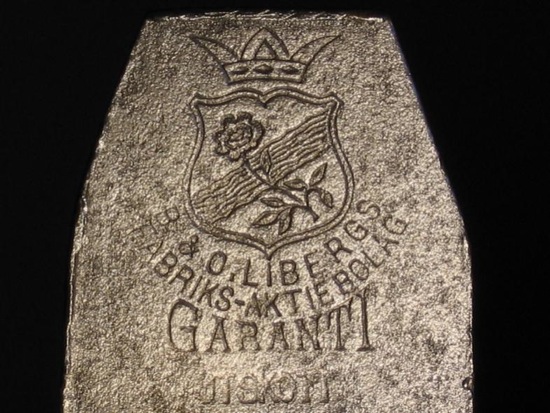
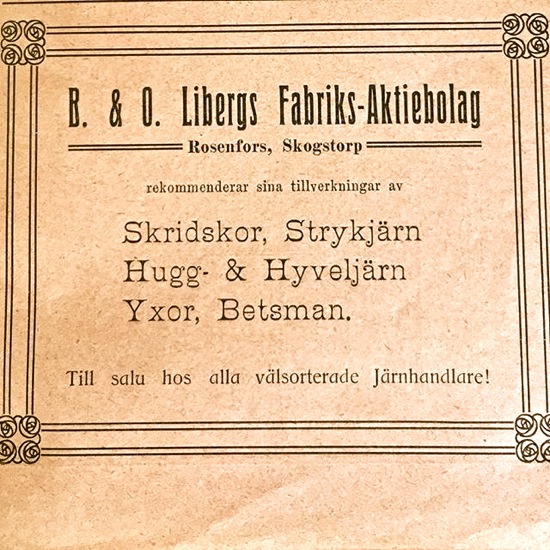
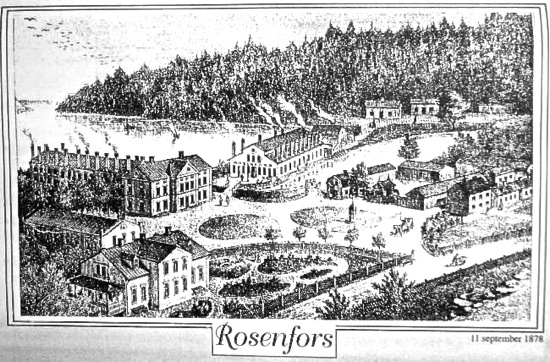
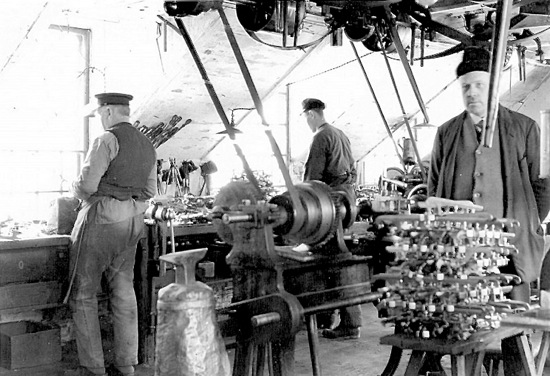
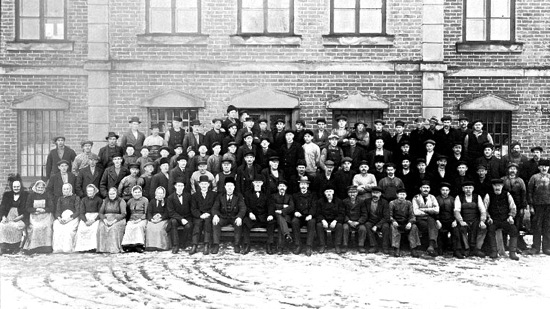
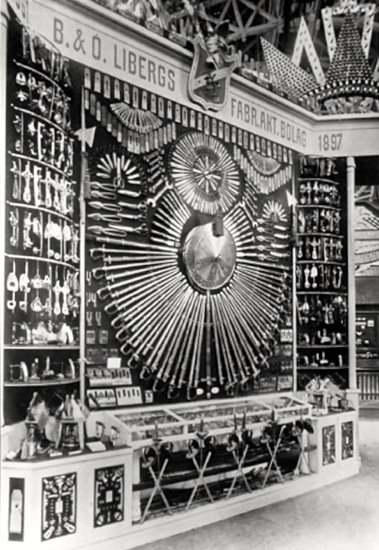
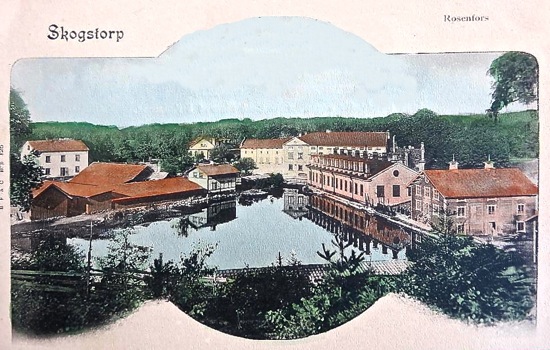
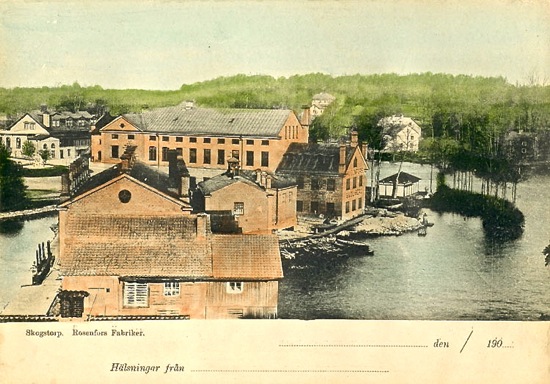
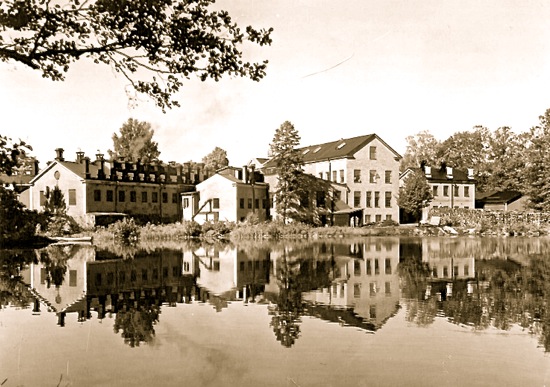
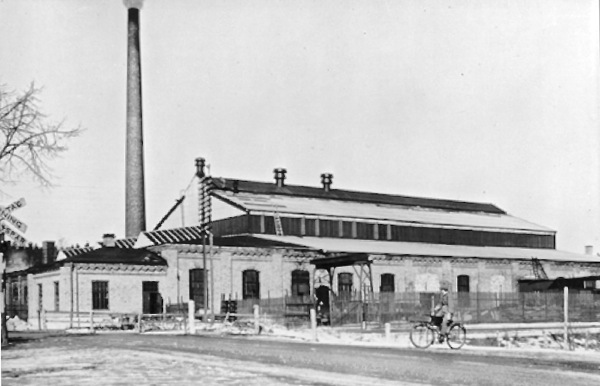
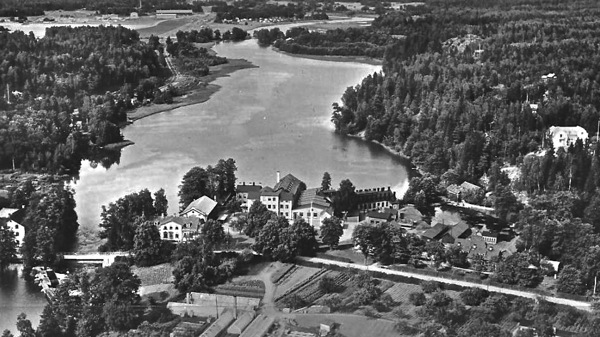
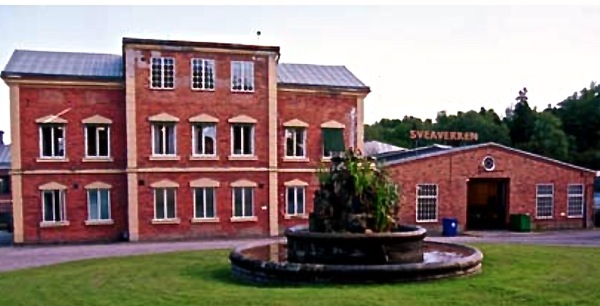
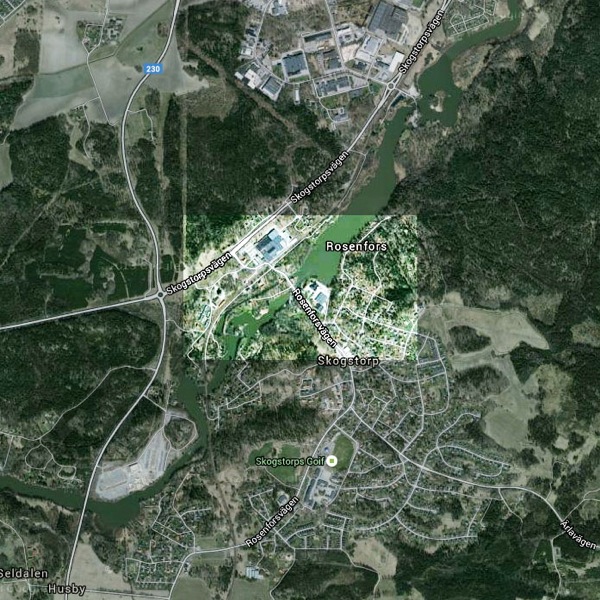
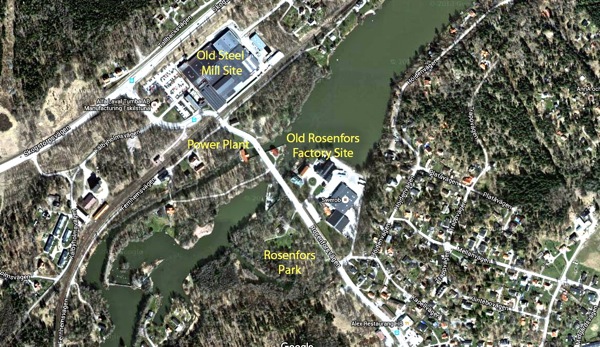
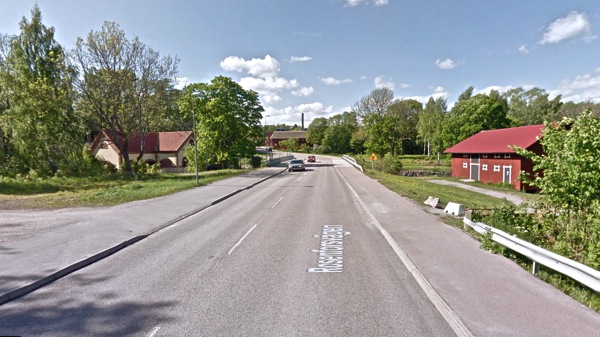
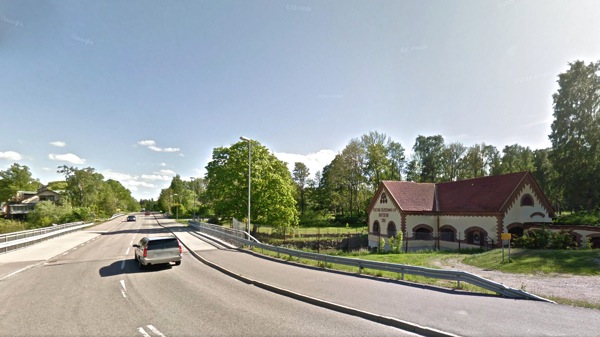

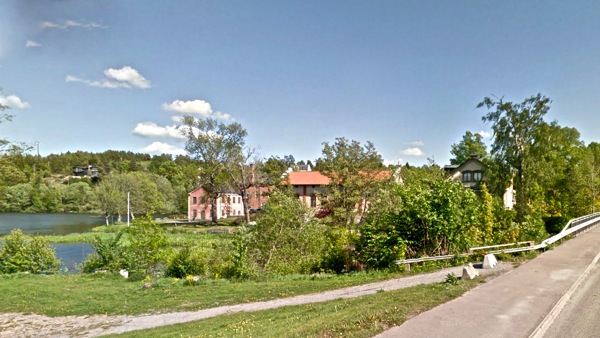
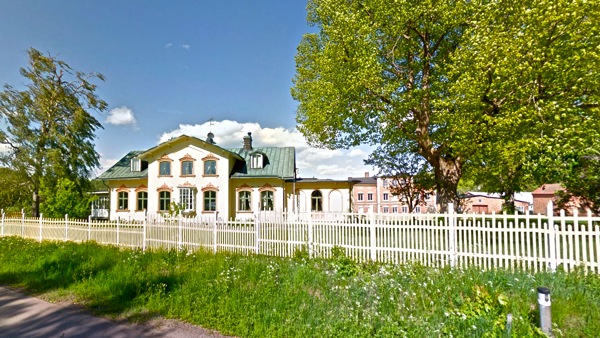
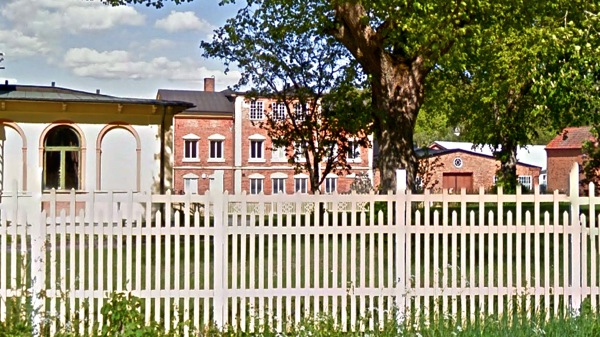

Thank you for this background information!
I am a Liberg who lives in the United States, and I have very little information about other Libergs in Scandinavia. I enjoyed this historical information.
My granfather was a carpenter. In the early years of the 20th. century he worked as a “naver” (=travelling craftsman) in Germany. Back in Denmark he earned his living as a master carpenter until retirement in the 1960’ies. Among his tools were some german wood chisels, a lot of chisels made by E.A. Berg Eskilstuna – and one: a 19 mm. chisel with the hallmark: B&O LIBERGS FAB ROSENFORS ESKILSTUNA. I am very happy to learn the history of the maufacturer of this – I can assure you – quality tool.
I own a large antique jointer plane made by B & O Libergs, Rosenfors. It is in quite good condition, made of birch. The sole is beech. The blade is stamped with the company name and rose logo plus 10 appellations, laminated steel. The tote is held in place by a clever hidden dovetail and one screw. When removed, the signature of the owner is revealed “L. Nygren 1892”.